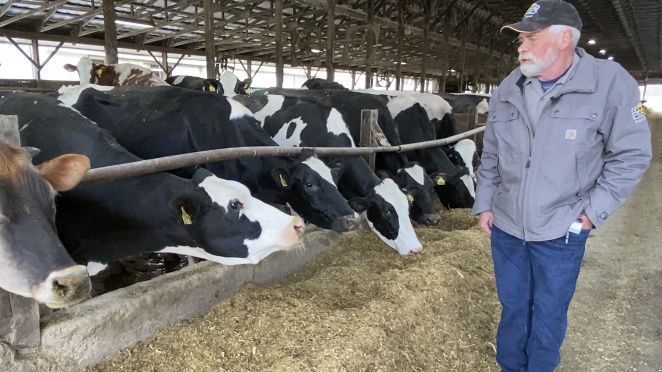PERRYSBURG, N.Y. — Amanda Dakowsky’s family has had a sheep farm in Perrysburg for about 25 years now.
"Predominantly, we raise the lambs for the Easter market, as well as to our customers,” said Amanda.
Amanda is a meat producer and raises cattle on her parents' farm as well as her own a few miles down the road. She says both farms have experienced a kink in the supply chain, as getting supplies to maintain the property has been increasingly difficult.
"Causes huge distress,” she said. “Farming already operates on very tight margins. Equipment has been hard to get. The prices have skyrocketed. Fertilizer. If you can even get fertilizer, I think the price has quadrupled.”
Amanda raises the cattle on her parents' farm until the animals give birth in the spring, then in the fall, she and her husband take care of those calves on their farm for about another year until they're market-ready.
The animals then go to one of two meat processing facilities, though Amanda says appointments are hard to come by, because there are not enough processing facilities to accommodate the high number of animals.
"It's very frustrating,” she said. “Because that's how competitive it is to get into a slaughterhouse.”
She has to book appointments a year or two years in advance for calves not even born yet, and turn away customers because there's not enough beef to sell.
"And if we had more USDA inspected slaughterhouses which is where you need to go if you want to retail meat directly to the consumer such as what we're doing here,” Amanda said.
"Supply chain issues are causing a great deal of stress, and chaos in day-to-day operations,” said NY Farm Bureau President David Fisher.
The bureau recently identified the supply chain as one of its national priorities.
Fisher says a number of factors have impacted the supply chain including equipment and part shortages, as well as transportation issues, breakdowns between the farmer and consumer.
"There's backlogs, and then stuff coming in, but also stuff going out,” Fisher said. “There's a lot of ships going back with empty containers because they don't want to wait to reload. So, it's affecting some exporting that could be done.”
To help farmers like Dakowsky, the USDA is investing $215 million in grant funding to expand meat and poultry processing options.
"To hear that is very encouraging, and it's very exciting to hear that news, that support, from USDA,” she said.
In addition to beef, Dakowsky also raises feeder pigs and sells a freezer full of pork and chicken as well.
The agency is keeping its eye on a bill in Congress that would reform ocean shipping and promote proactive trade policies. It would ensure cargo containers would not leave U.S. ports empty, but rather be filled with agricultural goods bound for other countries.







